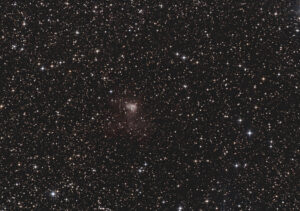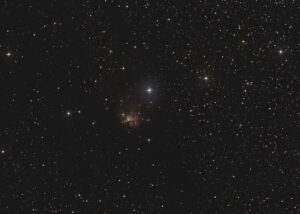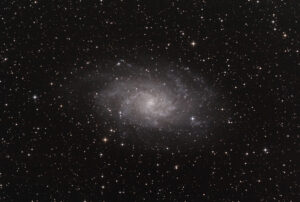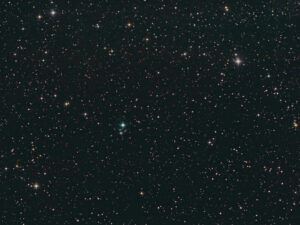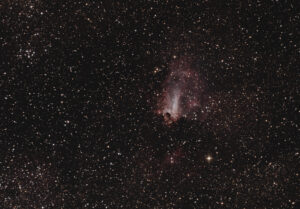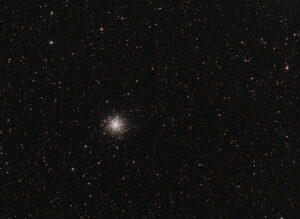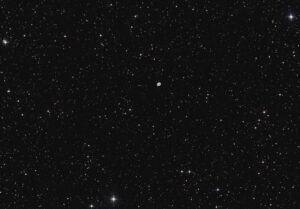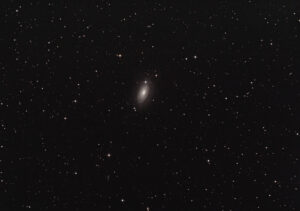NGC 7789 was discovered by Caroline Herschel in 1783 and is known as Caroline’s Rose in her honor. Her brother William Herschel included it in his catalog as H VI.30.
This image was compiled from 54 frames at 120 seconds each. Perhaps should have gone with longer exposures but was concerned of overloading the starfield.
“Caroline’s Rose is an example of an open star cluster. Unlike globular clusters, which are ancient objects, open star clusters are groups of up to a few thousand younger stars that are loosely bound together by gravity. Caroline’s Rose is about 8,000 lightyears away and is a much older open star cluster, potentially about 1.6 billion years old.”
“The brightest stars in the cluster are orange giants. Most other bright members are also evolved stars – giants and subgiants. More than a dozen blue stragglers have been identified in the cluster. These are stars that appear younger and bluer than expected for their evolutionary stage. They are hotter than main sequence stars in the cluster that are about to evolve into red giants. Blue stragglers are believed to be the result of stars colliding and producing higher-mass stars with higher temperatures.”


